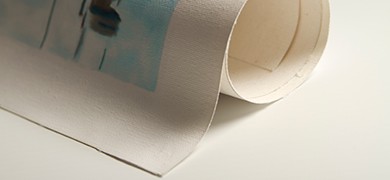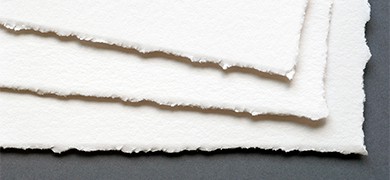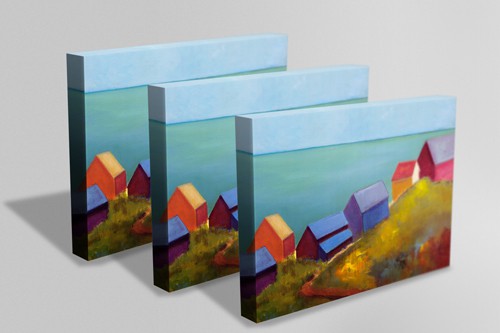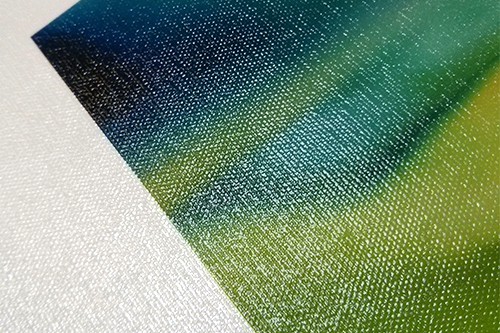Art Reproduction
Art Reproduction
Local Giclee printing services in Laguna Beach, California
Local Giclee printing services in Laguna Beach, California
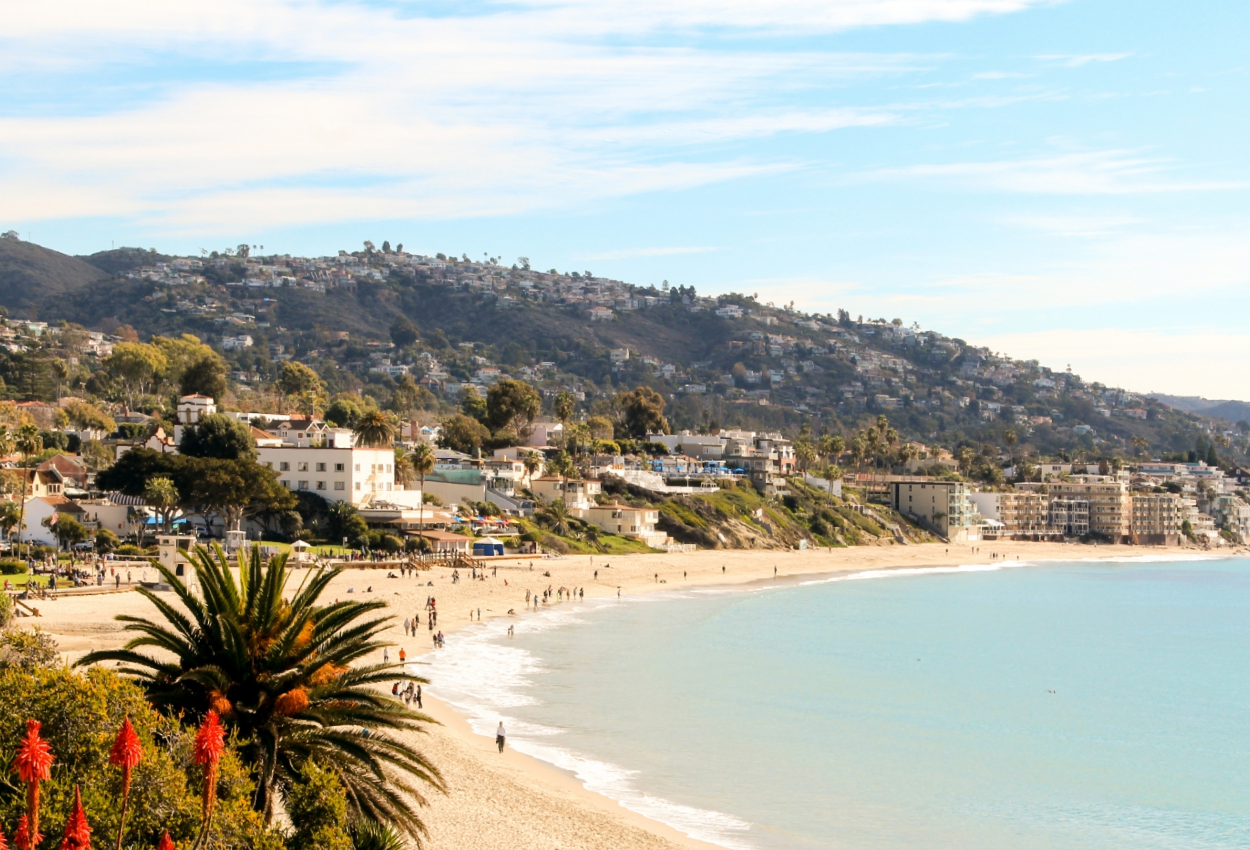
Local Giclee printing services in Laguna Beach, California
Vincent van Gogh (famous painter; one-eared fellow) noted that, “Great things are not done by impulse, but by a series of small things brought together.” We totally get this. You’ve worked so hard to create your masterpiece, and now it’s time to take the steps to get it out there—but where do you start? Don’t worry. We can help you pull all the small things together by offering the best in fine art reproduction services available in all of Orange County.
Our art reproduction process in Laguna Digital.

Step 1 - Digital Capture or Scanning

Step 2 - Color Management

Step 3 - Printing

Step 4 - Finishing
Printing Services
Mailing Services
Digital Services
Other Services
Why Choose Us?
Expertise
Over 15 years of professional art reproduction experience in Laguna Beach.
Quality Assurance:
State-of-the-art scanning and printing technology ensures archival quality and vivid color reproduction.
Customer Satisfaction:
Trusted by local artists for our precision, care, and consistent quality.
Step 1
Digital Capture or Scanning
An image capture is essentially a hybrid of a photograph and a scan. It is made using a digital scanning back in a traditional medium format camera. It actually scans the original from top to bottom through an open camera aperture. This is the best form of digital preservation possible for your originals. All the best museums and galleries utilize this form of photography for their originals.
Large Format Fine Art Scan
We have a 2400 dpi, large-format flatbed scanner which is ideal for works on paper or canvas. Maximum size 24″ x 36″.
Film & Transparency Scan
Drum scanning option creates archival quality, high-resolution scans that extract and preserve every subtle detail in film mediums including negatives, slides, and transparencies. Files created during drum scanning are highly detailed, as the process resolves the film grain structure and reveals every nuance of the image. Drum scanning ensures optimal quality in a large range of print sizes and the images created are full of rich colors, depth, and amazing sharpness.
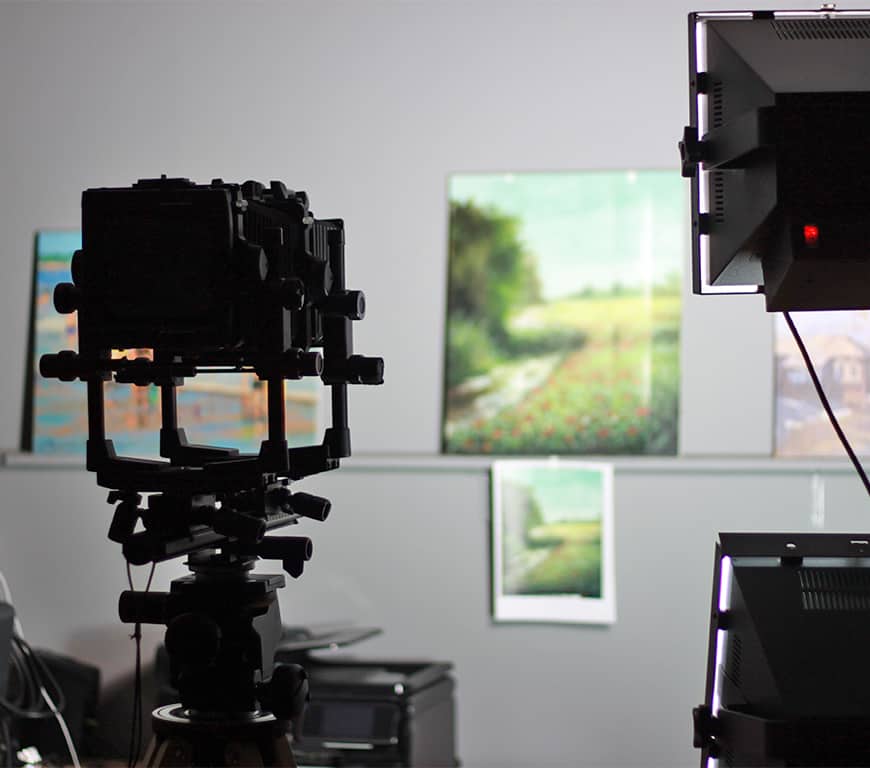
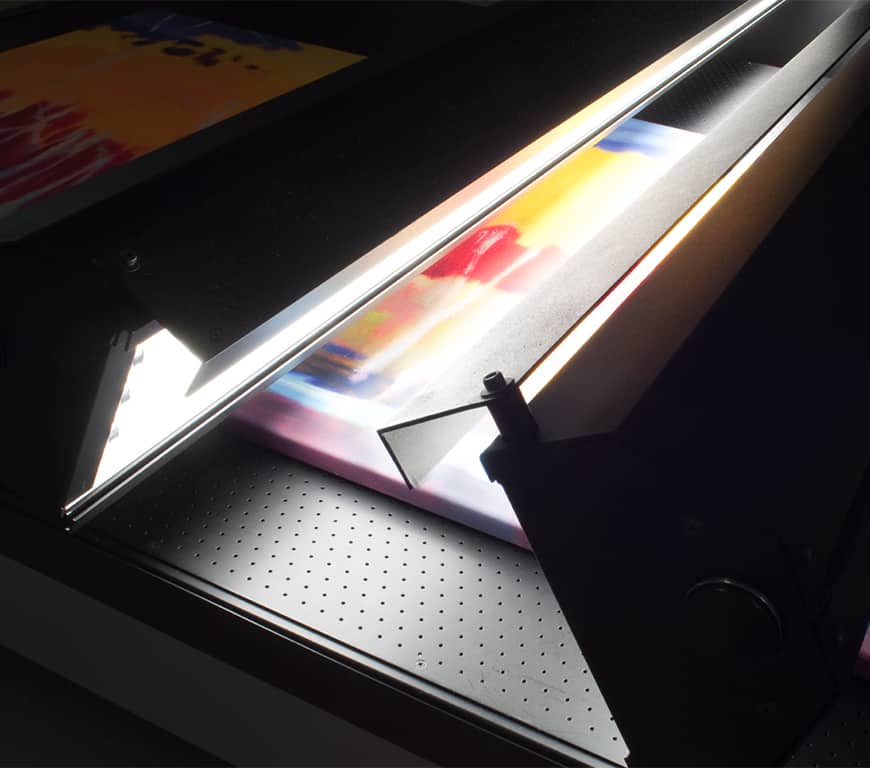


Step 2
Color Management
Graphic professionals adjust or optimize the colors in a scan to achieve the most accurate color reproduction. The complexity of file optimizing varies from easy to difficult depending on the dyes and pigments in the original artwork and the printing device being used.
Proofs:
Graphic professionals adjust or optimize the colors in a scan to achieve the most accurate color reproduction. The complexity of file optimizing varies from easy to difficult depending on the dyes and pigments in the original artwork and the printing device being used.
Step 3
Giclée Printing
Giclée printing is a process that uses fade-resistant, archival inks and archival substrates to print on large format printers. This process is often used by artists to make reproductions of their original artwork, photographs or computer-generated art for resale while preserving the original.
The term Giclée printing is based on the French word “le gicleur” meaning “nozzle”, or more specifically “gicler” meaning “to squirt, spurt, or spray”. Laguna Digital specializes in high quality Giclée printing and works with the artists to create gallery-quality reproductions of their work.
Substrate Options Include:
Canvas:
High-quality, acid-free 100% cotton canvas with a tight weave, matte non-reflective surface, bright white point, exceptionally high Dmax, and wide color gamut. Perfect for stretching and can be glazed for further protection.
Somerset Velvet:
100% acid free heavyweight cotton rag fine art paper with a textured, radiant white velvety surface. Provides vivid color reproduction and rich black tones. A favorite for watercolor artists, it is archival museum quality with a light fastness rating of 100 years.
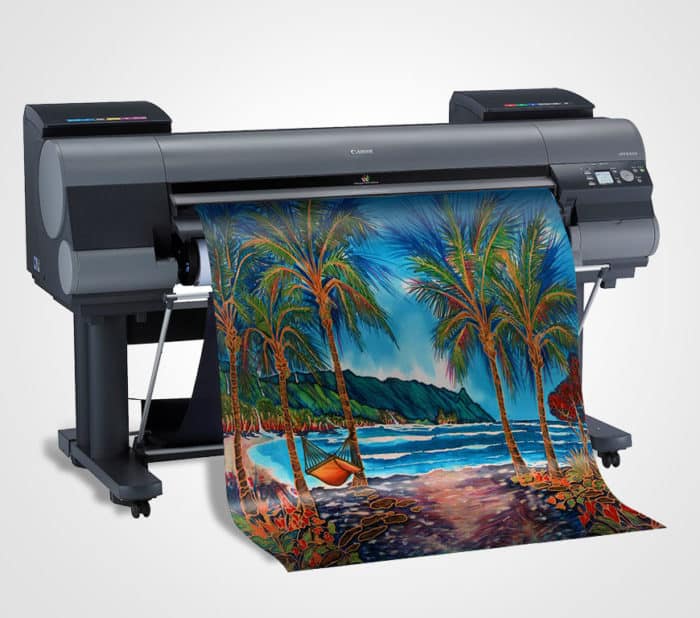
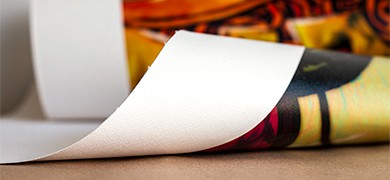

Step 4
Finishing
Frequently Asked Questions
We offer a comprehensive range of services, including design, digital short-run color and BW, offset and large-format printing, marketing collateral, promotional products, scanning and archiving, mail services, and more.
You can request a quote directly through our contact form or call us. Our team will discuss your project needs and provide a detailed estimate tailored to your requirements.
Turnaround times vary by project type. Digital short-run printing can be completed quickly, while offset and large-format projects may take a bit longer. We’re committed to meeting your deadlines—contact us for specifics on your project.
Absolutely! We’re proud of our quality and can provide samples of our previous work or arrange a consultation to review similar projects that match your needs.
Yes, we specialize in digital and variable data printing, which allows us to personalize print materials for each recipient, ensuring your marketing collateral has maximum impact.
What Our Customers Say About Laguna Digital
Trusted by businesses, artists, and individuals for top-quality printing. See why our clients love us!
-
Laguna Digital is hands down the best printing company I’ve worked with! I recently had business cards and brochures printed, and the quality was outstanding. The colors were vibrant, and the paper felt premium. Their team was super helpful, ensuring my designs were perfect before printing. Highly recommended!
Robert Fox
Founder & CEO, Strong Insights -
I needed a batch of flyers and postcards printed urgently for an event, and Laguna Digital delivered on time with flawless results. Their customer service was professional, and they made the entire process smooth and stress-free. Will definitely use them again!
Jacob Jones
Head of Design at Zazoo -
As an artist, finding a reliable printer for art reproduction is crucial, and Laguna Digital exceeded my expectations. The prints were true to color, and the attention to detail was impressive. They perfectly captured the essence of my artwork. Highly recommend for artists looking for top-tier printing!
Alex Sandro
Founder & CEO, Strong Insights -
Our company has been using Laguna Digital for all our marketing materials, including brochures, rack cards, and posters. Their printing is always sharp, colors are consistent, and their team is great at handling bulk orders efficiently. Great pricing and top-quality service!
Jennifer C.
Head of Design at Aveni -
I ordered an aluminum sign and a PVC sign for my storefront, and they turned out fantastic! The durability and print quality are top-notch, and the colors don’t fade even after months of outdoor exposure. Laguna Digital is my go-to for signage!
Alex Sandro
Founder & CEO, Strong Insights -
Laguna Digital is hands down the best printing company I’ve worked with! I recently had business cards and brochures printed, and the quality was outstanding. The colors were vibrant, and the paper felt premium. Their team was super helpful, ensuring my designs were perfect before printing. Highly recommended!
Robert Fox
Founder & CEO, Strong Insights -
I needed a batch of flyers and postcards printed urgently for an event, and Laguna Digital delivered on time with flawless results. Their customer service was professional, and they made the entire process smooth and stress-free. Will definitely use them again!
Jacob Jones
Head of Design at Zazoo -
As an artist, finding a reliable printer for art reproduction is crucial, and Laguna Digital exceeded my expectations. The prints were true to color, and the attention to detail was impressive. They perfectly captured the essence of my artwork. Highly recommend for artists looking for top-tier printing!
Alex Sandro
Founder & CEO, Strong Insights -
Our company has been using Laguna Digital for all our marketing materials, including brochures, rack cards, and posters. Their printing is always sharp, colors are consistent, and their team is great at handling bulk orders efficiently. Great pricing and top-quality service!
Jennifer C.
Head of Design at Aveni -
I ordered an aluminum sign and a PVC sign for my storefront, and they turned out fantastic! The durability and print quality are top-notch, and the colors don’t fade even after months of outdoor exposure. Laguna Digital is my go-to for signage!
Alex Sandro
Founder & CEO, Strong Insights
Request a Quote
NO Die & plate charges
Enjoy cost-effective printing with no additional fees for die and plate charges. This means you get high-quality prints without the extra setup costs, making it perfect for small and large print runs alike.
High quality offset printing
Experience superior print quality with our state-of-the-art offset printing technology. Delivering sharp details, vibrant colors, and professional-grade results for all your printing needs.
Custom size & style
Get prints that match your exact requirements. Choose from a variety of sizes, paper types, and finishes to create customized prints that suit your brand and business needs perfectly.
Secure payment
Shop with confidence knowing that your transactions are safe and secure. We use industry-standard encryption and trusted payment gateways to ensure your data is protected at all times.
Fast & free delivery
Get your orders delivered quickly with our reliable shipping services. We offer fast turnaround times and free delivery on eligible orders, ensuring you receive your prints when you need them.
Low minimum order quantity
We make printing accessible to everyone by offering low minimum order quantities. Whether you need a single batch or a bulk order, we’ve got you covered with flexible order options.
Art Reproduction Services
Orange County's Premier Local Art Reproduction Specialists
Preserve your artwork with museum-quality reproductions
Professional printing services for artists, photographers, and collectors
Local Convenience
No shipping needed - bring your artwork directly to us
See It Happen
Watch your reproduction take shape in person
Expert Craftsmanship
State-of-the-art equipment and skilled technicians
Preserve your artwork with museum-quality reproductions
Professional printing services for artists, photographers, and collectors
Local Convenience
No shipping needed - bring your artwork directly to us
Expert Craftsmanship
State-of-the-art equipment and skilled technicians
Expert Craftsmanship
State-of-the-art equipment and skilled technicians

